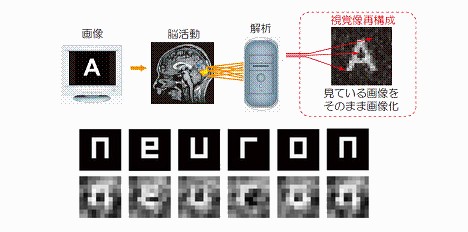Scientists "pull out" images from the brain

Researchers at the Japan Computer Neuroscience Laboratory (Japan's ATR Computational Neuroscience Laboratories) have created an incredible new technology that can recreate images by transferring them from the human brain to a monitor screen. According to scientists, the further development of the technology will not only improve the quality of data transmission, but also display our dreams.
With the help of a special device (abbreviated as fMRI ), scientists analyzed changes in the cerebral circulation of patients, and thus recreated the images shown in advance. At the first stage, specialists showed a man a series of images and traced changes in the direction of blood circulation that occurred in the cerebral cortex. The subjects were shown 400 random black and white images, 10 by 10 pixels in size. Each illustration was shown for 12 seconds. Then, fMRI tracked changes in brain activity, and the computer performed a calculation, comparing the results with available digital image data.
')
Then, the subject was shown a "set" of images (such as the word "neuron"), and the monitor in real time, relying on data on changes in the brain, displayed ready-made words.
So far, the system is capable of displaying only simple black and white images, but Dr. Kang Cheng, a researcher at the Brain Institute RIKEN, is confident that by improving the calculation algorithm, it is possible to achieve a color image on the screen.
“This is a real breakthrough in our understanding of brain activity,” says Cheng. “After some 10 years, continuing active research in this area, it will be possible to“ read ”human thoughts.”
Researchers suggest that the future of this technology can be used in art and design. You can “draw” a picture or drawing in a split second simply by presenting it. This technology, representing a "window" in the human head, is also useful in medicine, for example in psychiatry.
The chief investigator of ATR, Yukiyasu Kamitani, notes: “Similar principles can be applied to the senses. In the future, we will be able to understand feelings and decipher complex emotional states. ”
The full results of the study on December 11 were published in the American scientific journal Neuron.

Source: https://habr.com/ru/post/46868/
All Articles